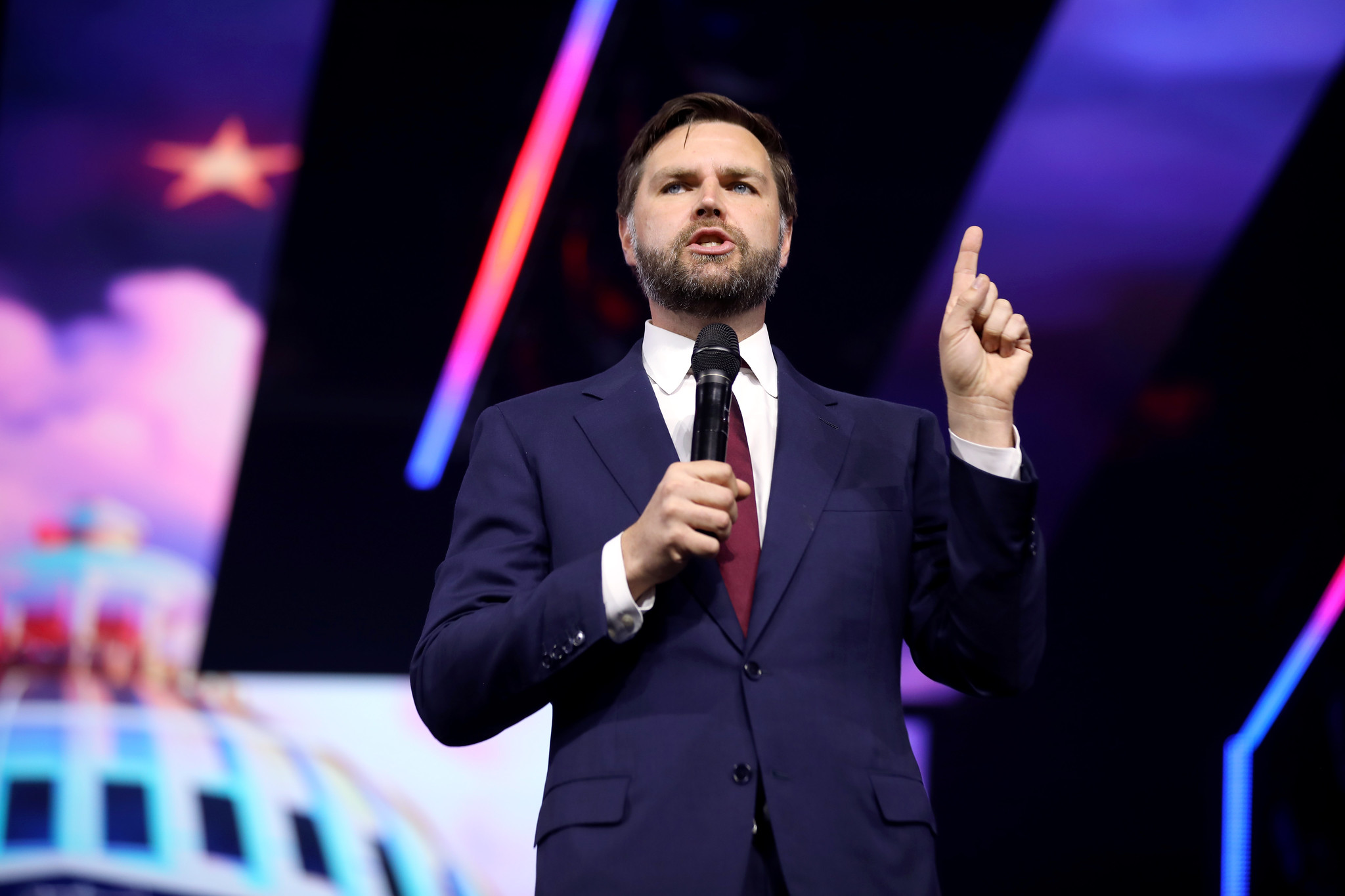A New Guide to the Heating Arctic
A review of Kristina Spohr and David S. Hamilton, eds., and Jason C. Moyer, co-ed., “The Arctic and World Order” (Brookings Institution Press, December 2020)
Published by The Lawfare Institute
in Cooperation With

A review of Kristina Spohr and David S. Hamilton, eds., and Jason C. Moyer, co-ed., “The Arctic and World Order” (Brookings Institution Press, December 2020)
***
The Biden administration has signaled its multilateral approach to the global climate crisis by appointing John Kerry as climate envoy and rejoining the Paris agreement. The Arctic will serve as a litmus test for this strategy, as a host of overlapping legal regimes, intergovernmental organizations, and transnational coalitions aim to combat melting ice, massive fires, and collapsing earth. So, how can the administration best mobilize and modernize this complicated institutional landscape to counter climate change in the Arctic?
The 16 chapters in “The Arctic and World Order,” edited by Kristina Spohr and David S. Hamilton (Brookings Institution Press, 2020), offer a partial answer for Biden and his team. The volume unites an array of experts in the region’s international politics and policy conundrums. Together, they offer a sweeping and largely accurate panorama of its often-misconstrued past and present order and the challenges facing it. The authors, writing in mid-2020, acknowledge the coronavirus pandemic and the current “unprecedented times,” but climate change is the real revolutionary force at work in the Arctic.
In their introduction, historians Kristina Spohr and Daniel S. Hamilton describe the Arctic as today’s “first frontier.” Global warming and the collapse of the post-Cold War order may undermine the Arctic’s status since 1989 as a province of dialogue among international actors. How states and societies behave in the Arctic is a litmus test for how they will adapt to the changing global climate and political order.
The contributors’ chapters present either concrete, factual explanations or conceptual frameworks relevant to the Arctic and international orders both regional and global. The factual chapters offer detailed information on indigenous and non-Arctic representation in the Arctic Council, energy realities, shipping routes, and relevant international and national law in the region. The framework chapters generally grapple with the meaning of Arctic exceptionalism over time and across issue areas.
Starting with the factual chapters, Arild Moe’s essay on energy realities dismantles the common narrative that the Arctic is host to a scramble for the world’s last great reserve of energy resources. He traces the hype to the late 2000s and argues that frequently cited estimates of hydrocarbon reserves are out of date, that no real territory disputes exist, that the supply crisis has not materialized, and that Russia is primarily investing in onshore reserves on account of the costs and time horizons to develop offshore resources. He concludes by noting that rules rooted in the U.N. Convention on the Law of the Sea (UNCLOS) and the International Maritime Organization will govern the Arctic’s thawing shipping lanes.
Lawson W. Brigham and Mia M. Bennett and her co-authors separately offer similarly sober takes on the realities of much-hyped Arctic shipping routes. Brigham provides a good overview of the many fundamental factors militating against trans-Arctic shipping (rather than destination shipping bringing resources out of the Arctic). Bennett and her co-authors explore the legal and practical dimensions of the transpolar sea route, concluding that the most reasonable system would be a hub-and-spoke network where containers would be gathered at hubs on either end of the Eurasian Arctic and conveyed between those hubs by polar-class shipping vessels.
Two chapters shed light on how relevant international institutions exclude key voices in Arctic policymaking. Marc Lanteigne offers a clear analysis of how non-Arctic states, including China, fit into regional governance alongside the eight states that have territory in the Arctic. He warns that efforts to keep the Arctic Council closed to just the “Arctic 8” may backfire, as climate change raises the stakes and scope of economic, ecological, and martial spillover from the region. Inuuteq Holm Olsen’s chapter is a critical counterpoint to Lanteigne’s; Olsen concludes that the rise of non-Arctic states as important stakeholders risks further sidelining indigenous voices. His chapter also offers a valuable summary of Greenland’s changing and—from Nuuk’s viewpoint, unsatisfactory—Arctic Council representation.
J. Ashley Roach, the distinguished expert on maritime law, provides a primer on the freedom of navigation in the Arctic. His appendices offer excellent overviews of the relevant sources of international law and their application to the Arctic straits. However, Roach concludes his essay with an off-the-cuff, provocative warning that China, Russia and Iran pose threats to freedom of navigation in the Arctic—an argument he will hopefully flesh out in greater detail in another essay. Suzanne Lalonde’s essay, by contrast, focuses narrowly on the Northwest Passage. She provides an outstanding overview of how Canadian law grants First Nations groups greater say in the region’s use. Lalonde also argues that the United States and Canada should “continue to agree to disagree” over navigational freedoms in the Northwest Passage.
The remaining chapters present frameworks for understanding the region’s political, legal and economic orders. Generally, these essays would have benefited from better structure—particularly in their arrangement across the book. Instead of a coherent conversation across two clearly delineated halves of the book, these normative and framing chapters are scattered throughout, talking past one another even as they all interrogate what exactly “Arctic exceptionalism” means. The result is a certain level of both redundancy and incompleteness.
Oran R. Young’s opening essay initiates the “framework” theme. He begins by reviewing the narrative that the Arctic is a zone of exceptional peace. He traces the peace narrative’s genesis to then-Soviet Premier Mikhail Gorbachev’s 1987 Murmansk speech and identifies the narrative’s principal tenets. He then elaborates three 21st century narratives—power politics, climate emergency and energy reservoir—that challenge the legacy peace narrative. In the past decade, a power politics narrative that views the region as host to a new “great game” or great power competition has arisen to challenge the post-Cold War peace narrative. Young criticizes the power politics narrative as rooted in uninformed or reflexive realism that ignores or misunderstands the region’s considerable institutional structures. The other two challengers to the peace narrative are the climate emergency and energy reservoir narratives, which describe the region as a locus of climate change and a font of hydrocarbon riches, respectively. These four narratives and their overlaps provide a neat typology for academic and media coverage of the region’s developments.
Three other chapters grapple with the meanings of Arctic exceptionalism. In a winding essay, P. Whitney Lackenbauer and Ryan Dean identify several additional meanings, including that the region is, somewhat contradictorily, exceptionally well-governed, exceptionally ungoverned, exceptionally institutional, and exceptional in its recognized stakeholders. In a Sergio Leone-inspired chapter, Andreas Østhagen explores how regional order is “good” and global power politics are “bad,” and argues that bilateral relations are “ugly” in that states generally strive to keep their relations over the Arctic insulated from “power-balancing behavior.” Finally, Lassi Heininen uses German sociologist Ulrich Beck’s Risikogesellschaft, or “risk society,” concept to argue that the substance of “high politics” of the Arctic is really climate change, rather than “great power competition.”
The chapters by Nengye Liu and Alexander N. Vylegzhanin offer frameworks for understanding the legal aspects of Arctic order. Liu’s essay offers a simple reminder that power shapes order, and law codifies that order. The Arctic, he argues, will not be able to invoke its exceptional status to escape the global reckoning over order in a post-U.S. primacy world. His recommendations speak mainly to Chinese policymakers, but Western readers would benefit from asking themselves how China might propose a “better order” for Arctic coastal states. If such an order exists, should Arctic states move in that direction independent of Chinese proposals?
The most disappointing essay might be Vylegzhanin’s. The Russian international law expert promises a framework that will contrast regional law with global law and illuminate their potential for future friction. Instead, his contrasts are misleading and his vision absent. He claims, for example, that the region is on a knife’s edge between regional and universal rules, citing so-called extended continental shelves as evidence. He asserts that states have yet to choose whether to stake their continental shelf entitlements based on the regional “sector angle principle” or on the rules laid out in UNCLOS. In fact, four of the five Arctic littoral states have already made submissions to the Commission on the Limits of the Continental Shelf in line with UNCLOS, and the United States has been collecting data to follow suit. His concluding meditation on the future of Arctic law is likewise unsatisfactory. He nods to the need for regional and global rules to address emerging issues like the Central Arctic Ocean fisheries, but abruptly raises the prospect of an ice-covered Arctic after 2100 governed by national and bilateral, rather than global and regional, law. He fails to flesh out the intervening 80 years.
“The Arctic and World Order” only partially lives up to the promise of its title. Despite the editors’ comments about the Arctic as a litmus test for global changes, all the body chapters focus solely on how the evolving global order might play out in the Arctic. This overview is robust and worth reading. However, aside from a few hints by Liu and Roach, contributors effectively ignore how developments in the Arctic might also contribute to and affect the shape of that global order. Perhaps this gap can be fodder for a sequel.
The volume ultimately gives a mixed response to the question of whether observers should believe the Arctic competition hype. The factual chapters reasonably tamp down alarmist geopolitical narratives, revealing the material constraints on energy development and shipping or the banality of regional boundary disputes. The framework chapters, in contrast, give significant airtime to all narratives and only in some essays do authors explicitly dismiss the “reflexively realist” expectation of rising conflict. This tension is surprising for a volume that seems inclined to favor the value of institutionalism as both narrative and fact. Selective readers might come away with a different image of the Arctic than that intended by the editors and authors.
Nevertheless, the book offers something to all interested in the Arctic region. The framework chapters provide valuable overviews of the region’s normative debates and their origins, even if they could have been more reader friendly and placed more directly in conversation with each other. Those new to the region will benefit most from the factual chapters and from Young’s overview of the region’s peace narrative. Even established Arctic hands will likely learn new details from these well-structured essays. The editors have compiled a notable cast, and their essays are certain to generate surplus value for every reader.




